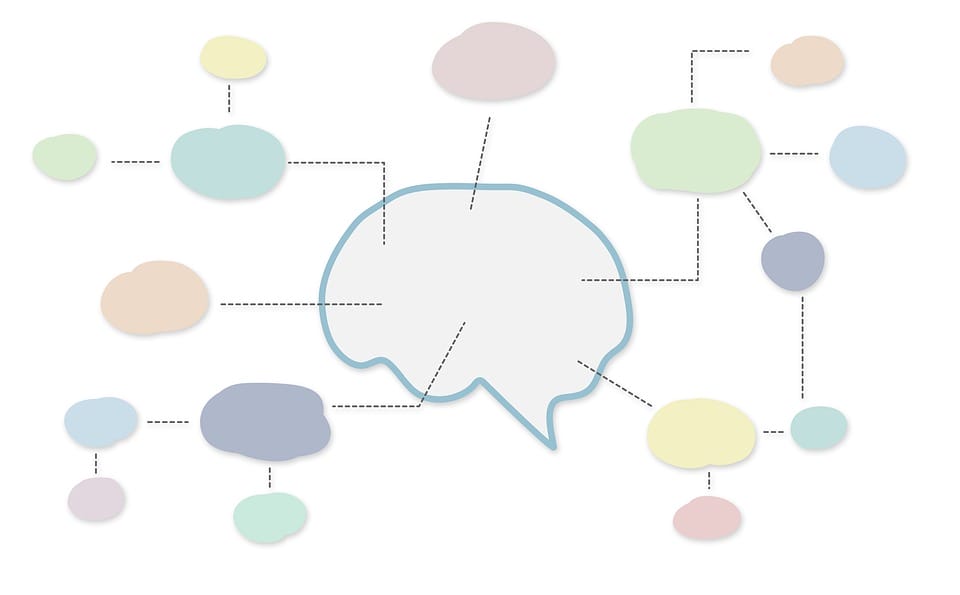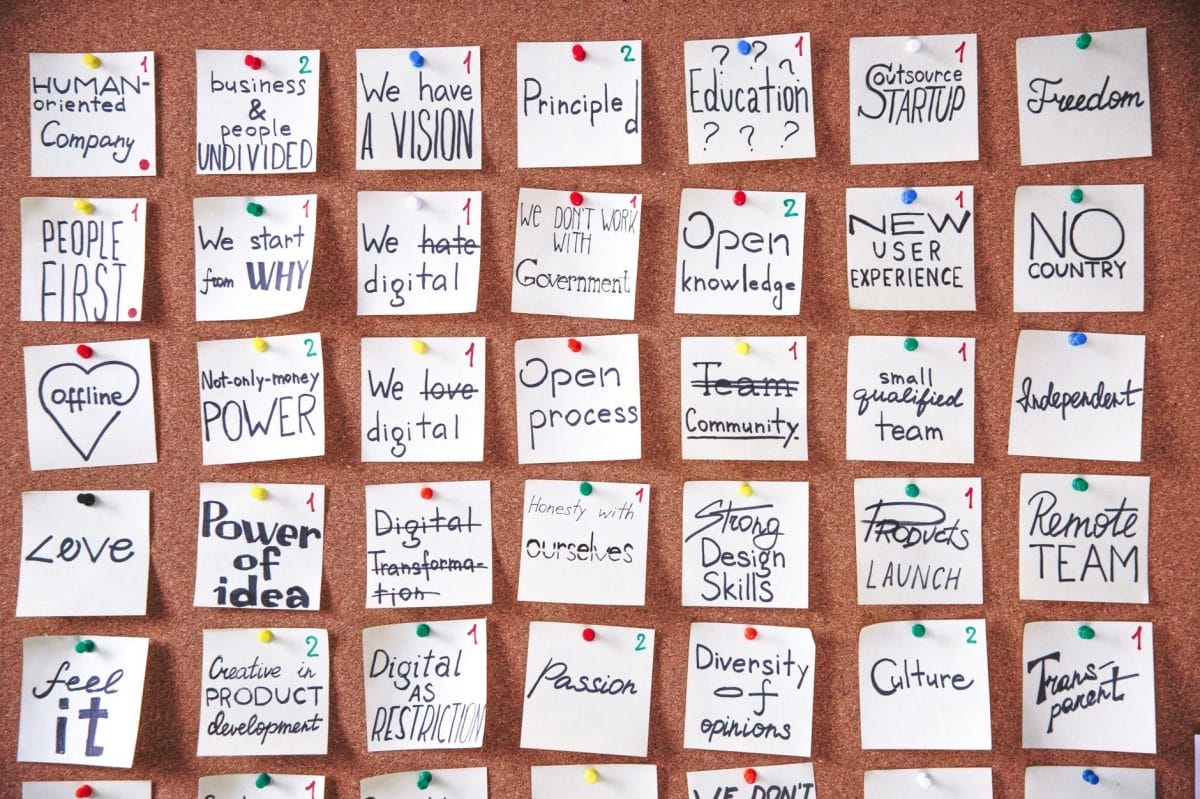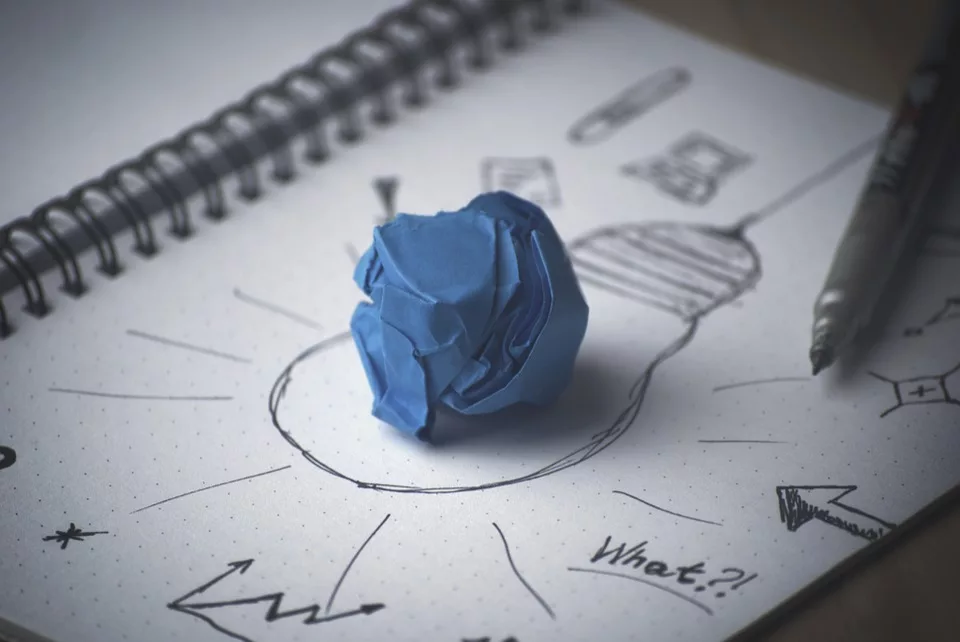In this article we will explore 10 Ways to come up with great game ideas for great games that will help you level up on your creativity and develop better ideas into games.
Since everyone likes a good top ten list, I thought I’d put together a list of my ten (currently, twelve!) favorite ways to come up with new game ideas.
Some of these methods are the result of our own empirical experience through the games that we have been developing over the course of the last years.

25 Ways to come up with great game ideas
1. Play lots of games!
This may seem obvious, but a number of game designers I met had barely played any games. If your knowledge of games is limited to minesweepers and solitaire,then, you won’t have much knowledge about what games work well in today’s market.
But remember: play all kinds of games. New, old, good, bad. That way you will quickly learn different mechanics and recognize what works and what doesn’t in a game.
Maybe there is a particular part of the game that you really like. You may be able to develop this and create a game based entirely on that idea.
Alternatively, try combining two of your favorite games and see what you can create.

2. Be Observant of the World
Creativity is about finding new and innovative ideas. It is often associated with thinking outside the box. However, creativity can also be found in the world around us.
Creativity can be nurtured by observing the world around us. By looking at what people do and how they interact with each other, we can find inspiration for new ideas.
One of the best ways to increase your creativity is by observing what people do in their day to day lives. This can be done by going out into public spaces like a mall or a park and just watching people go about their business.
3. The Use of Constraints
Constraints can be a powerful tool for creativity. They can help you think outside the box and generate more ideas.
Some examples of constraints are time, space, materials, colors, time in history, and subjects. They can be used to generate creative ideas in writing or any other form of art.
Creativity is often considered as a process that doesn’t need any constraints because it should be limitless. But this is not always the case. Constraints can provide a new perspective on your work and help you generate more ideas to solve the problem at hand. .For example, when you’re brainstorming how to save the environment, having no constraints can be a problem because there are too many potential solutions. When you set up rules for submissions like “no more than three words,” it prevents people from coming up with hundreds of long and difficult-to-say ideas that would take time to filter out.
4. Seeking Input
Creativity is a key component in any work. It is the process of generating new ideas and novel ways of thinking, which can be used to solve problems. We should always seek input from others to increase creativity.
The best way to improve creativity is by having an open dialogue with others. People who are creative often talk about their ideas with other people, as this helps them get feedback and new perspectives on their ideas.
5. Use an Idea Log
Idea logs are a great tool to use when you need to generate new ideas. They can be used at any time, and they can be used by anyone.
An Idea Log is a list of questions that you ask yourself in order to get your brain thinking in different directions. An idea log is typically compiled of key words or phrases that are intended to inspire creativity.
The act of journaling, or writing down thoughts and feelings, has been proven to be an effective way for people to manage their emotions and improve their mental health. Journaling also promotes creativity because it forces the writer to think about things in a different perspective than they would have before writing them down on paper.

6. Mind Map It
Mind mapping is a diagramming technique that helps you brainstorm, organize and visualize ideas in a creative way.
Mind Maps are a tool that has been used for a couple of years to manage creative processes, it can help you solve problems and come up with innovative solutions. One way to increase creativity is by using mind mapping techniques, because it can help you think in new ways and find new solutions to problems.
There are many different ways to do mind maps, but the basic idea is the same for all of them: You start with a central idea or question, then branch out into related thoughts or ideas connected by lines or arrows. This allows you to see your thoughts in a visual way that
Mind mapping can be used in any domain where brainstorming is needed, including education, business planning, creative thinking, problem solving and decision making.

7. Research
Research is a powerful tool that can help you generate creative ideas. The more you know about your topic, the more creative ideas you will have. It is the foundation for creativity and innovation.
Research can be done in many ways, from reading books to watching documentaries to asking people on the street, but it all boils down to one thing: understanding what you are trying to create before you create it.
8. Look for gaps in the market
It can be helpful to look at the games that are currently available and start thinking about what is missing.
What audience or groups are being left out of the games that you like to play or would like to create a game for? What group sizes and dynamics are not represented by the games available?
Is there demand for more single player games, games for groups of ten or more? What about games for children with learning disabilities?
Try to think outside the (game) box.
9. Look at other markets and industries
Many ideas and lessons can also be gleaned from other markets. For example, look at different entertainment genres such as games, music and movies.
Video games often feature save points, power meters, inventories, different difficulty levels, and even a final boss. Many successful games spawn sequels.
DVD movies include features such as chapters and extras.
Perhaps there are things we can learn from other industries and apply some of their great aspects to videogames.
10. See things from different perspectives
Games are also a great opportunity for players to take on roles they wouldn’t normally dream of. Instead of playing the role of a knight in shining armor, they are asked to play the role of a villain or a monster.
‘Burgle Bros’ is a cooperative game in which all players are thieves, working together to rob a bank. The game takes players out of reality and into a fantasy world, where they can act in ways that would be unthinkable in the real world. This is really exciting and engaging for many players.
11. Get Active in the Gaming Community
Gamers are a creative bunch. They have to be, in order to stay on top of their games.
A study by the University of Rochester found that gamers were better than non-gamers at problem solving, spatial reasoning and generating ideas.
Gamers have an advantage when it comes to thinking outside the box and coming up with new ideas. They may not be able to use their creativity in other areas like copywriting, but they can use it to generate content ideas for their projects or clients.
Interfacing with them will allow you to think about games in a differentive way, or to see limitations for certains for which there is a high interest, which will allow you to generate new ideas for.
12. Focus on a Genre
The most common way to increase creativity is to focus on a different game genre. and see what new ideas we come up with.
The more you will be able to know the genre, the better you will understand its flows and limitations, which will in turn transform into ideas that will allow you to create new extended mechanics or games that will resonate with different types of video games.
13. Pick a Theme to Explore
When thinking about game ideas, you also need to go further and explore specific themes.
Narrowing down the genre or theme will help you get a clearer idea of the game you want to create. Small things can make a big difference to the shape of a game.
For example, a simple shooting game can be made more interesting with a space theme. Adding that little touch will spark your imagination.
Once you have a solid concept, you can add more elements and eventually you will have a great game idea.
14. Start-Off with a Character
Another effective way to get stuck in the creative process is to think of a character first. Deciding on the main character first can make it easier to develop ideas for the game.
You can brainstorm around this one core element until the concept is complete.
The main character can be a person, a creature, an object, or a specific location. Once you have a solid character, consider the many possibilities.
Think about how your character will interact and react. Consider different themes, issues, and gameplay around the protagonist.
15. Draw Inspirations from other Mediums
Games are not the only media in which you can find inspiration. You can also find inspiration in other media, such as film, television, art, music, and books.
What are your favorites? What aspects resonate with you? Look for elements in other media on which to base your game ideas. It can be anything. A cool concept or action scene from a movie or series, a beautiful piece of art, a great song or its album cover. Inspiration is everywhere if you look for it.
15. Take a Break of making videogames
It is a common practice to take a break from work and do something else in order to get new ideas. It can be drawing, reading, playing, or even making video.
Creativity is the key to coming up with new ideas for games.
Video can help us relax and focus on something different for a while. And then we can come back refreshed and ready with new ideas for our game projects.
17. Read the Latest News & Reviews
Looking through the latest industry news and game reviews can also help generate game ideas. online publications such as Gamasutra, Polygon, IGN, Touch Arcade, and Indiegames.com are great sources of information to gather An excellent source of useful information.
The better you understand what players like and don’t like, the more quickly you will be able to come up with game ideas.
Make it a habit to keep an eye on the latest trends. To stay on top of gaming news, download an RSS feed reader app like Feedly or Pocket.
You can also add interesting game development blogs to your RSS feed. The deeper you can get into the gaming scene, the more effective you will be.
18. Just Start & Game Ideas will Flow
If you can’t think of an idea for a game, you can still do it. It’s easy to get overwhelmed by your own expectations of what you should earn. In these situations, creating a “practice game” can take the pressure off of you and allow you to be creative.
Don’t be obsessed with creating the perfect game, just mess around a bit and the wheels will start turning and more and more ideas will come to you. Just pick any type of game and play with it. You may happen to catch the perfect game. You never know.
If you get stuck, try one or all of the tips above. Making games should be fun. If you can’t think of a game idea, take a deep breath, exhale, and relax. Play lots of games, observe, try different brainstorming methods, do research, work within your limitations, and remember that new ideas will always come.
Remember that creativity is about connecting things and becoming more open and aware.
19. Watch and participate in game contests/Jams
Watch for game design contests and game jams.. Perhaps one of them will catch your interest and you might decide to design a game and enter the contest. If you do, your game might get noticed, and maybe your game will be published.
You will be also forced to get new ideas based on the theme and the expectation off the contest and jam. Since most of themes are very short in time and are happening regularly around the world, they are a good way to nurture creativity.
20. Look for inspiration wherever you are
Ideas can come from anywhere. Wherever you find them, you need to be prepared to suck them up.
Videogames are usually played indoors, but if you go outside, you can find many interesting ideas waiting for you in nature. Animals interacting with each other, trees blowing in the wind, or anything else you can think of.
Sitting in front of a computer or game console is not the only way to get good ideas. You have to get out and about. Do something different. What do you notice? Talk to people, pay attention to their conversations, and explore the world around you. Be open to any suggestions.
21. brainstorming
There are many brainstorming techniques for generating lots of ideas.
Here are some of them.
- Write down everything that occurs to you.
- Write down each letter of the alphabet and come up with an idea associated with that letter.
- Think of the worst videogame idea you can think of. Now turn this around and see if these and the opposite ideas can work.
- Remember, when brainstorming, write everything down. There are no bad ideas. Even the craziest ideas can lead to something interesting.
22. Could it be a game thinking
If you are talking to someone and they say something, you can comment, “That could be a game.”
Any idea can be a game concept in its own right.
I take note of such ideas as they arise. Many of them will never see the light of day, but some of them may later evolve into something special.
- stop thinking about video games
We know this is completely contrary to the other suggestions above.
But stepping away from what you are doing and not thinking about it for a while can help your brain relax and relieve some of the pressure.
Doing so can sometimes lead to solutions to problems found in existing games or ideas for new games.
BONUS IDEAS.
A few more ideas were considered and added to the original list here…
23. Learn more mechanics
The more mechanics you are able to use or to understand how to apply in game, the more ideas you will have to apply in new games. Mechanics are the bricks of games, and the more you have on your toolbox the more possibilities will open for you when trying to create new games.
You can learn then by applying rapid prototyping concepts, like trying to make one game a day for 30 days and look at the results. There are plenty of documented cases, of game creators that have tried it with very good results.
.
24. “What-if” Thinking
Think “what if.” What if the earth had no gravity? What if we had legs where our arms are and vice versa? What if we were pets and animals ruled the world?
Think about your own “what ifs.” What if you could turn one of these scenarios into a game? What would it look like?
This is another great way to think outside the box.
When and where do the best games ideas come up? What is your favorite ideation technique?

25. Copycat – Improve
We have left for the ent, one that is used a lot through the industry ( Especially on mobile) , although now one will tell you that they are using it. It is the copycat/improve loop. Take a game and copy its main ideas and its main mechanics and adapt them to your story and your assets. Try to improve some of the elements to differentiate them from the original game.
We don’t recommend this, because it is already very difficult to differentiate with a unique and original game as to be trying with a copied game.
But it could be a good tool to explore new possibilities and leverage on new mechanics or new ways to tell a story, build a world, and get some inspiration to cherish new original ideas.
What are you going to do next?
Once you have an idea for a great game, it’s time to turn it into reality. The best and fastest way I’ve found to do that is to develop a vision for your game so you can constantly look back and start making a prototype to check if is really fun.
Also, take in account that there is an arithmetic for ideas, they can added, subtracted, multiplied and divided, so you can play around with them until you have something unique and innovative.
What do you think about these 25 ways of being creative? Do you have one that we didn’t listed? Then consider sharing it with the community through the comments sections on this post.
Check our blog for more interesting articles.
A game developer that wants to share its knowledge and experience with other game developers-




